How to Choose the Right Bra
Many women struggle to find the right bra for themselves. But shopping for one that will fit perfectly, be comfortable, and not slip off the shoulders or dig into the skin isn’t actually so hard. You can choose the perfect one for you as long as you have the right information. That’s why 5-Minute Crafts gathered a few simple tricks that you can use next time you’re out shopping for this item.
1. Measure your bra size.
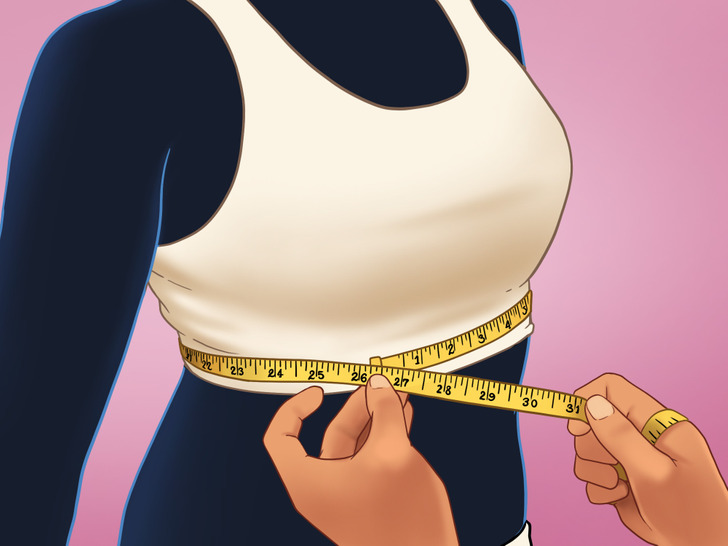
You need to know your proper bra size in order to find the right one for you. So the first step is taking measurements and calculating the bra size. Use a measuring tape for this.
Measuring your band (underbust) size:
- Place the tape under the band of your bra and around your ribcage. Make sure it’s tight but comfortable and that the tape is leveled.
- See how many inches (or centimeters) you are and write it down.
- If the number that you wrote down is an even number, add 4 inches (10.16 cm) to it.
- If the number that you wrote down is an odd number, add 5 inches (12.7 cm) to it.
Examples:
- If the number is even, e.g. 30 inches (76.2 cm), then the equation is the following: 30 + 4 = 34 inches (round up to 86 cm). You’ll need to get a bra size of 34 inches (86 cm).
- If the number is odd, e.g. 31 inches (79 cm), then it’s 31 + 5 = 36 inches (round up to 92 cm). You’ll need to get a bra size of 36 inches (92 cm).
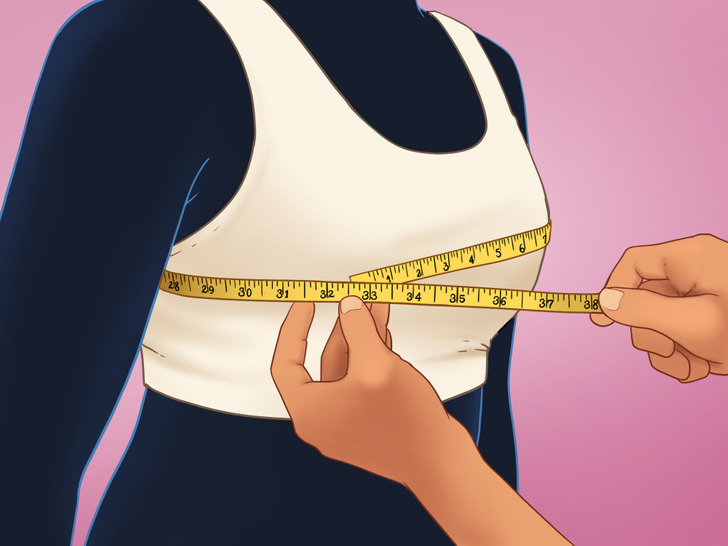
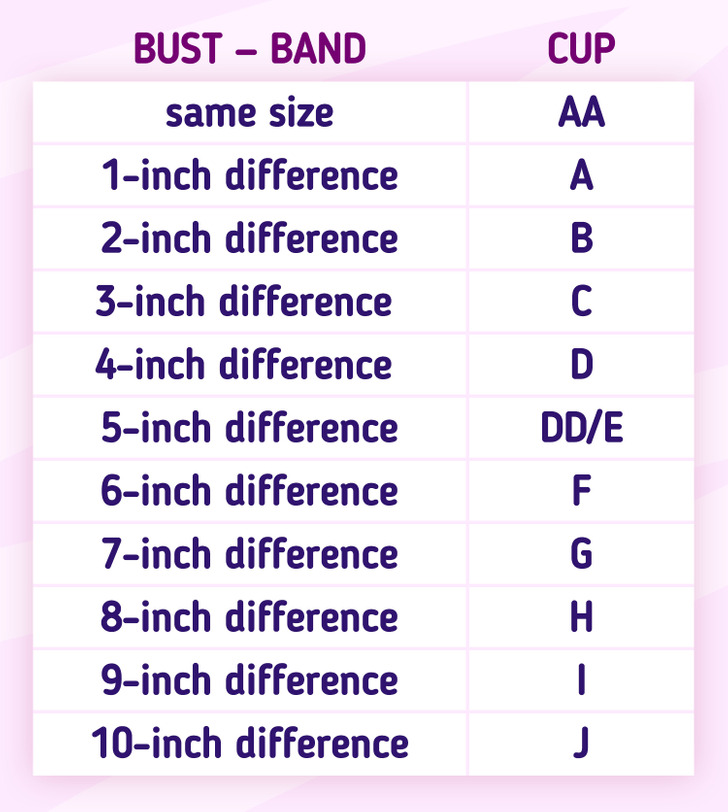
Calculate the cup size (in inches):
- Now subtract the bust size value from the band size number.
- The difference that you get will determine your cup size. For example, if your bust size is 36 inches and the band size is 34 inches, then 36 — 34 = 2. The difference (2) in this case is cup size B, which means that your bra size is 34B (look at the table above to find your cup size in inches).
Note: If you are measuring in centimeters, write down the number and check out the table below to see which size in centimeters corresponds to the cup letter. An example of measuring in centimeters looks like this: If your band size is 75 centimeters, then your size is 75. If your cup size is 92 centimeters, then you’ll need a C cup. That means that your bra size is 75C.
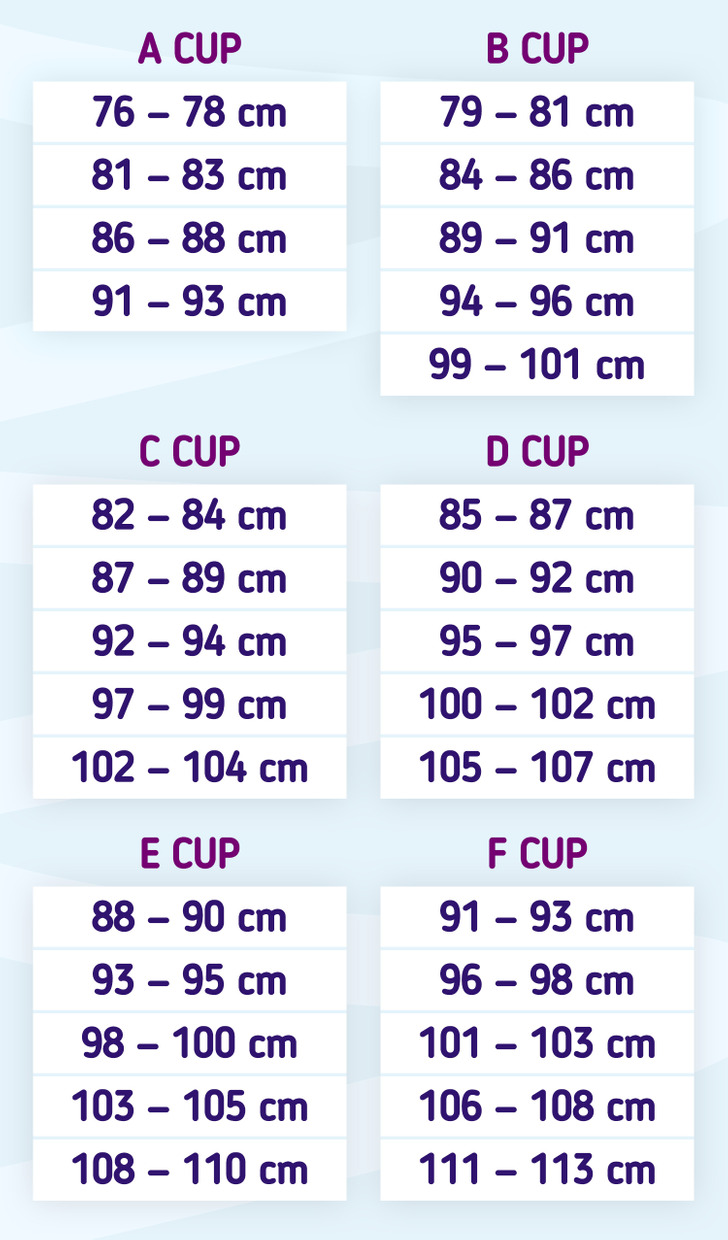
Note: Since the body goes through various changes in life (weight loss, weight gain, puberty, etc.), it is recommended to measure your breasts after each of these changes or get a bra fitting done once a year. You can look at the table to check the measurements. The band sizes are from 63 to 87 centimeters.
2. Check if the bra fits.
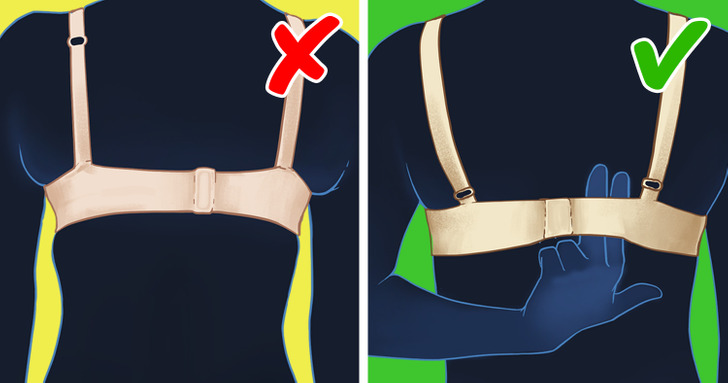
The band needs to fit firmly across the rib cage and should be horizontal all the way around. It should stand properly and not be loose, and it shouldn’t rely only on the support of the straps. It also shouldn’t be too tight or dig into your skin, causing redness. You can check if the band size is right by sliding 2 fingers underneath it on the back. If that’s possible, then the bra has the right band fit.
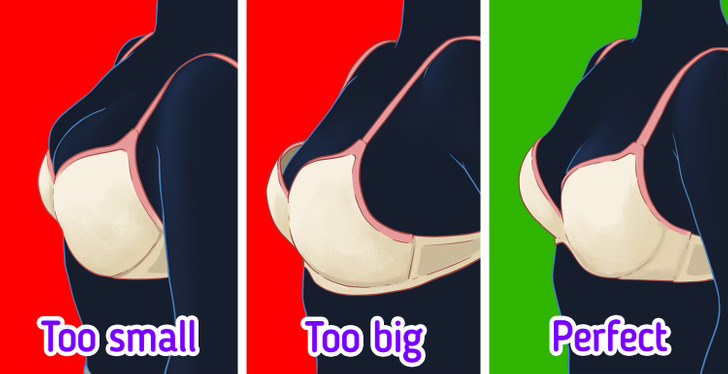
The cups should be the right size too. Your breasts should fit perfectly within the cup. You can check the following:
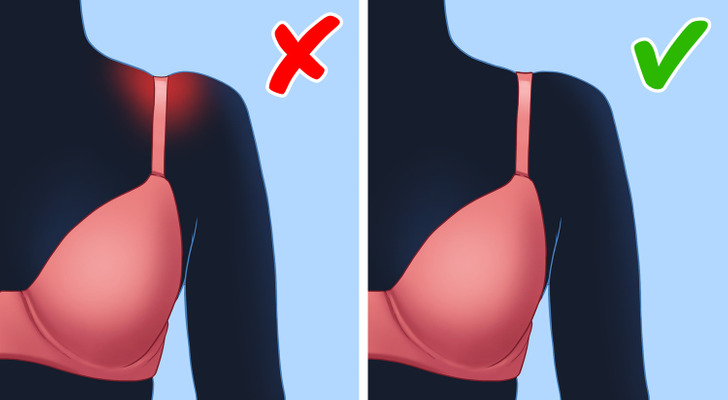
The straps should be tight enough to not slip off the shoulders, but also comfortable and not dig into the skin.
- Tighten the straps if they are falling off. However, if this doesn’t work, use the narrow straps for support.
- Loosen the straps if they are too tight. But if you see that the bra is still not fitting well, then the band size is probably too big and not giving the necessary support. Try using a bra with a smaller band size.
3. Know your “sister size.”
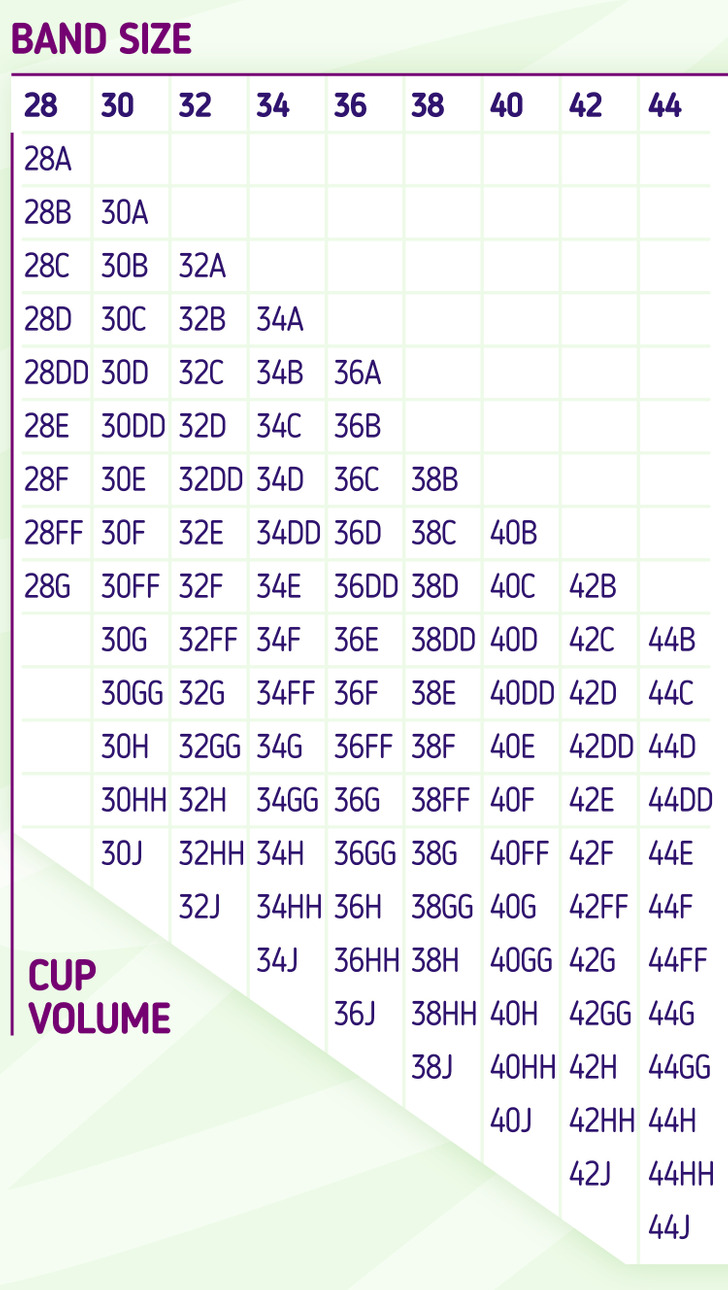
A “sister size” is the bra size that has the same cup volume but a larger or a smaller band size depending on what you need. For example, if your size is 34C, then the sister sizes of this are 32D and 36B.
How to choose:
- If the band feels loose, then you need to decrease the band size and increase the cup letter. For example, if you are wearing 34C, the sister size, in this case, is 32D.
- If the band feels tight, then you need to increase the band size and decrease the cup letter. For example, if you’re wearing a 34C, the sister size, in this case, is 36B.
Note: Bear in mind that your bra size can vary through different brands of underwear, so it is always better to check the chart and try it on to see if it fits.